First Drive: 2018 Dodge Challenger SRT Hellcat Widebody
“This car is not trying to be a Mustang GT350 or a Camaro 1LE,” explained Tim Kuniskis, head of passenger car brands of FCA North America, during the technical presentation for the new Widebody Challenger SRT Hellcat. “But we always knew that with more tire it would be in the 10s straight out of the factory. What we underestimated was how much better it would handle, too.”
Khodrocar - The numbers seem to back that assertion up – 13 car lengths separate the Widebody from the standard Hellcat per lap on the 1.7-mile road course at the Chrysler Proving Grounds, which equates to a nearly two-second advantage each time around the course, according to Dodge.
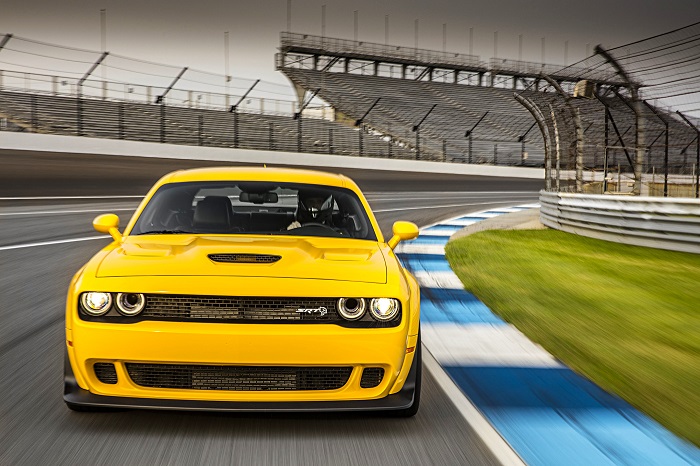
That’s a significant discrepancy on a race track, and one we were particularly keen to experience for ourselves on the Formula One-style course configuration that the folks from SRT had kindly set up for us at Indianapolis Motor Speedway. Before setting us loose out on the road course, we got a chance to dive into the particulars of new Widebody models to find out exactly what separates them from the now "standard” Challenger SRT Hellcats.
Putting The Power To The Pavement
When Dodge began to develop the flared fenders for the Demon, there was a plan in place all along that the widened bodywork would find its way to other models in the Challenger lineup. After all, with just 3300 Demons planned for production in total, a lot of folks who might want one of those drag strip juggernauts just aren’t going to be able to get them, and the Widebody Challenger now serves as a great alternative for salesmen to point would-be customers toward, as it offers the a similar visual aesthetic, sound, and plenty of jaw-dropping performance in a model that isn’t constrained by production limits.
But rather than focusing on drag strip supremacy, the Widebody continues the Hellcat tradition as a wildly charismatic grand tourer that’s equipped with plenty of track capability, yet remains civil enough in every day use that your grandmother could take it out to buy groceries.
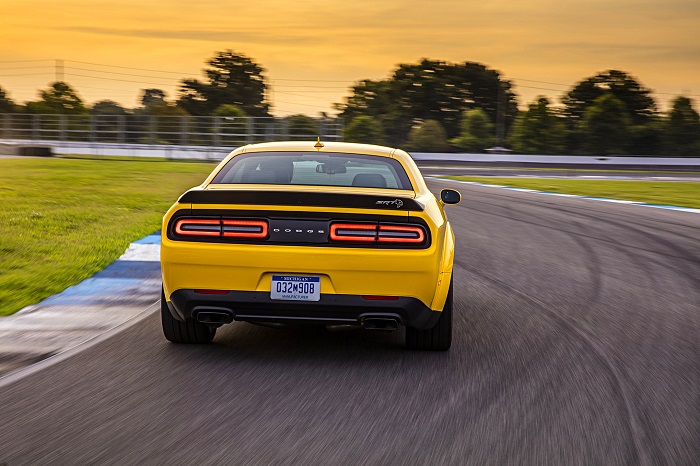
One element that has endeared the Hellcat in the hearts and minds of enthusiasts since Dodge unleashed these beasts upon the public in 2014 is how utterly effortless it is to roast a set of rear tires upon command. That’s product of both its rowdy, supercharged 6.2-liter Hemi V8, which boasts 707 horsepower and 650 lb-ft of torque — the latter of which comes on strong at very low revs — as well as the fact that the 275mm-wide tires installed from the factory just weren’t putting enough rubber to the ground to effectively contain that level of power.
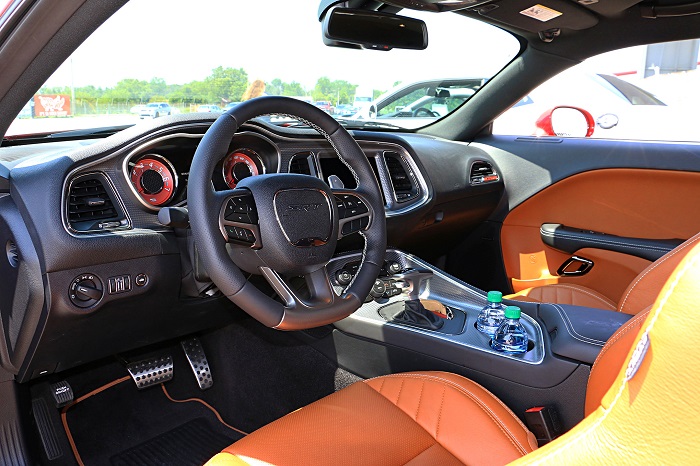
As a result, a lot of the Hellcat’s performance potential often goes up in smoke so it’s not much of a leap of faith to theorize that getting more tire under the car would likely improve its acceleration, handling and braking performance without the need to change much else. And that’s just what Dodge did, widening the Hellcat by 3.5 inches by way of beefy fender flares at all four corners, which allow for the new 20×11-inch "Devil’s Rim” five-spoke, forged-aluminum wheels to be installed wearing 305mm-wide Pirelli high performance rubber at all four corners.
The Hellcat also gets electrically-assisted power steering for the first time with the Widebody treatment, though standard-fender Hellcats will remain hydraulically assisted. While EPS has a maligned reputation for eliminating communication from the road through the steering wheel, Dodge insists that they’ve engineered the system for more feel and less isolation. The electric system adds the ability for the driver to select three different levels of steering weight, which will likely be a larger advantage to most drivers than the potential loss of at-limit steering feel would be a drawback.
Empowered with the additional rubber, Dodge says the Widebody Challenger will now sprint to 60 mph from rest in 3.4 seconds on its way to a 10.9 second quarter mile, improvements of .1 second and .3 seconds respectively, while also delivering .97g of lateral grip versus the .93g the standard Hellcat is capable of.
Those numbers all sounded promising, but the real measure of their worth is how the package performs in practice, so we headed out to the road course to put this newly grip-emboldened muscle car through its paces before taking it on a jaunt across town to see how it fared out on the street.
Behind The Wheel
Up close, the Widebody’s treatment shows its benefits as well as its shortcomings. The folks from Dodge assert that stretching the width actually gives the perception of shrinking the car, and while that may seem counterintuitive there’s actually some truth to that, as the wider rubber and new bulges change the car’s proportions slightly, making the it look lower and more planted.
The fender flares themselves are a modified versions of the existing fenders, rather than a unique fender stamping for the Widebody models. Dodge’s product managers liken this to a hot-rodded look, and they’re right about that too because there’s a distinctly aftermarket vibe to them.
The Widebody’s overall behavior is much like the standard Hellcat when hustling the car around a road course, but the added dose of grip provides more confidence at speed, encouraging you to brake later, carry more speed through a particular corner, and get on the throttle a bit earlier on exit. With so much power on tap the motor can still overwhelm the tires at will if called upon to do so, but you’ll also spend less time carefully feathering the throttle to prevent an unwanted smoke show at times when you’re looking to carve some corners with precision.
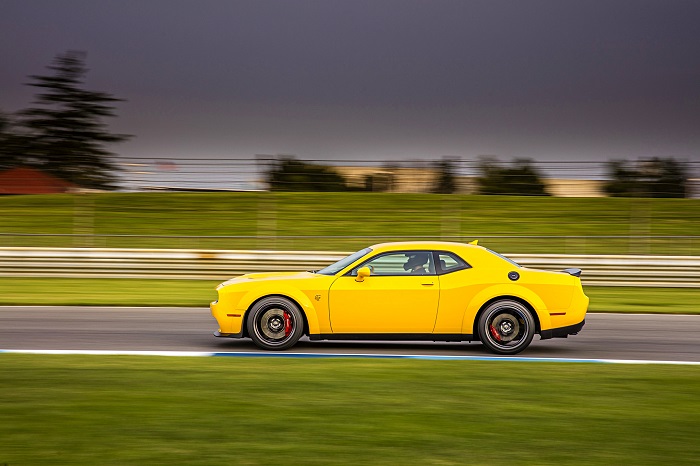
The Widebody rides on a new fifth generation PZero summer tire with a unique compound and construction designed for these cars (all-seasons are available too, but why?). While they provide reasonable bite, I have no doubt that switching over to an even more aggressive tire would yield big improvements in grip levels given how much contact patch there is to work with now. Of course that comes at the cost of tread life and drivability in less-than-ideal weather conditions, so given the Hellcat’s role as something of a Jack of all trades rather than a lap time record setter, it makes sense that SRT left such a decision up to would-be owners.
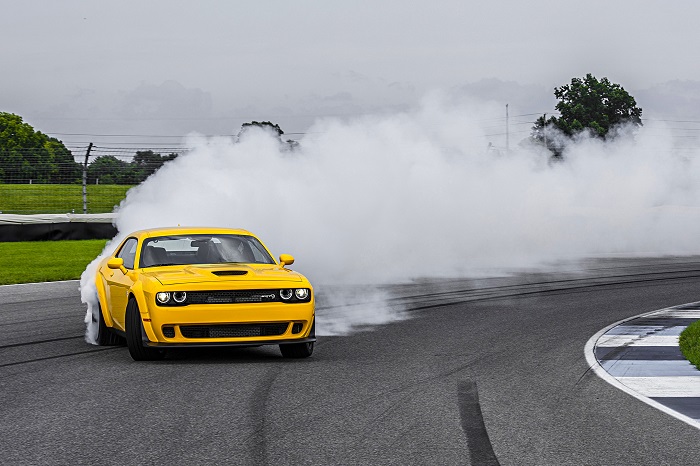
For enthusiasts that want a Hellcat with a bit more finesses, both when maneuvering and putting the power down off the line, opting for the Widebody package is a wholly viable solution provided you’re willing to shell out the additional coin. And for those who couldn’t get their hands on a Demon, opting for a regular production model that sports a nearly identical look and "merely” supercar-like performance right from the factory seems like a pretty good consolation prize to me. Production of the SRT Hellcat Widebody starts this summer with an MSRP of $74,290, which includes a $1700 gas guzzler tax and $1095 destination charge.
Source: Hot Rod
Latest News


